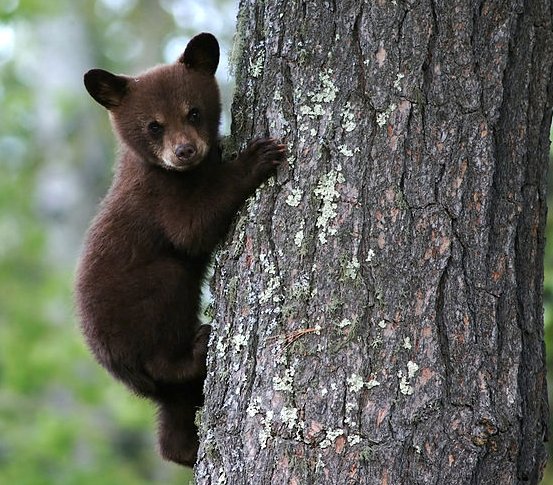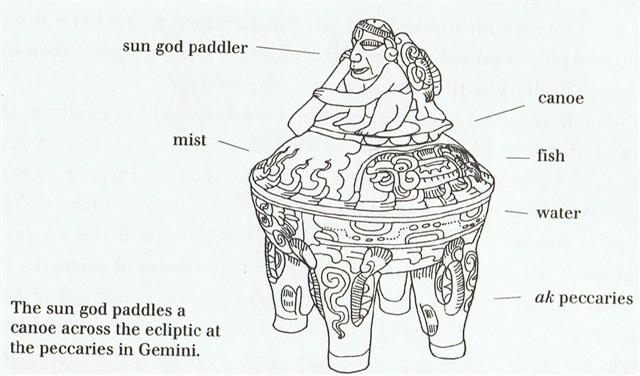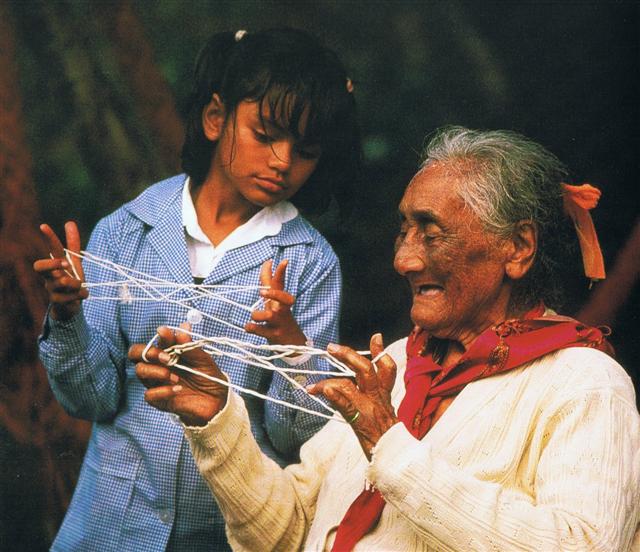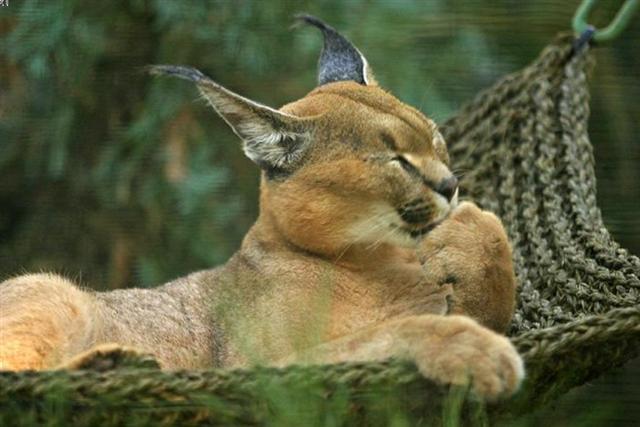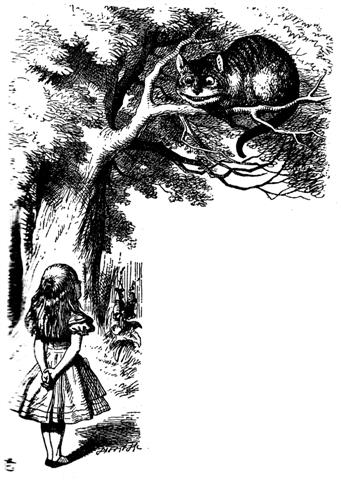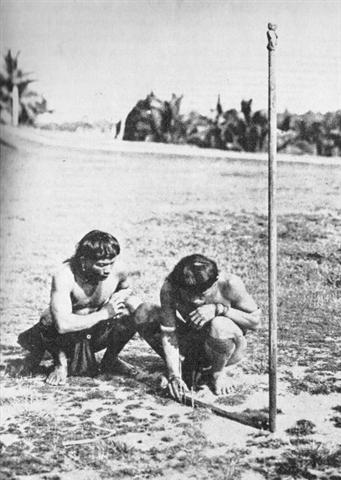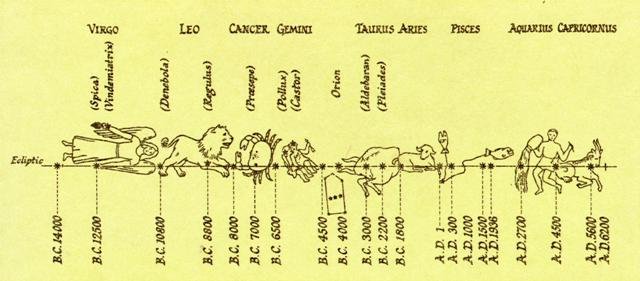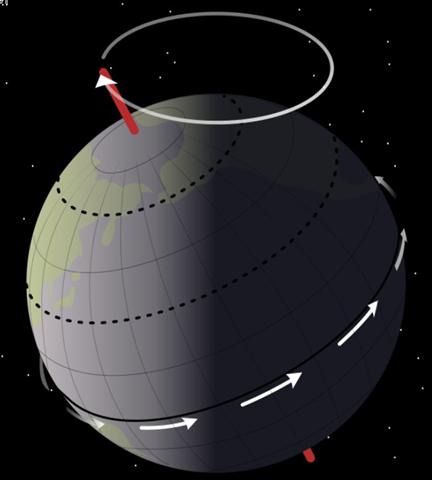|
TAHUA II
46 Once again. North of the equator there should be a polar star standing still: ... I became curious about this star ... called Nuutuittuq [= 'never moves'] ... So, on the lee side of our uquutaq (a snow windbreak) I positioned a harpoon pointing directly at this particular star to see if it would move. In the morning I checked it and discovered that the Tukturjuit (Ursa Major) had changed their position completely but the harpoon still pointed at this star ... I had discovered the stationary star ...
This was therefore a fundamental orientation point. And down from this fixed star a straight line (string, thong) should be drawn, all the way down to the right ascension point for 0h, where the Sun would rise (be born) at the vernal equinox. Where he would return up from the southern hemisphere.
This was the point in the east (the orient) to be paired with the north pole star in order to find the orientation points for all the moving stars.
This line could be named the Cradle of the Cat (the Sun).
At 0h the Sun Cat was reborn and this was therefore the place where the preceding winter season - the Chesire Cat (the Full Moon Cheese) would disappear - would die, go down, descend into the Underworld.
Where the harvest basket would take care of him.
In short, there was a grasping hand in the west and likewise a grasping hand half a year later in the east.
... Kaph is thought to have been derived from a pictogram of a hand (in both modern Arabic and modern Hebrew, kaph means palm/grip) ... The manik, with the tzab, or serpent's rattles as prefix, runs across Madrid tz. 22 , the figures in the pictures all holding the rattle; it runs across the hunting scenes of Madrid tz. 61, 62, and finally appears in all four clauses of tz. 175, the so-called 'baptism' tzolkin. It seems impossible, with all this, to avoid assigning the value of grasping or receiving. But in the final confirmation, we have the direct evidence of the signs for East and West. For the East we have the glyph Ahau-Kin, the Lord Sun, the Lord of Day; for the West we have Manik-Kin, exactly corresponding to the term Chikin, the biting or eating of the Sun, seizing it in the mouth.
The pictures (from Gates) show east, north, west, and south; respectively (the lower two glyphs) 'Lord' (Ahau) and 'grasp' (Manik). Manik was the 7th day sign of the 20 and Ahau the last ... So the line from the fixed star at the north pole was connected to the right ascension point for 0h.
And due to the precession both the north pole star and the star at the vernal equinox would change through the eons.
Apple, Spire (harpoon), and Crown (polar circle).
|
